With new technologies revolutionizing data collection, wildlife researchers are becoming increasingly able to collect data at much higher volumes than ever before. Now we are facing the challenges of putting this information to use, bringing the science of big data into the conservation arena. With the help of machine learning tools, this area holds immense potential for conservation practices. The applications range from online trafficking alerts to species-specific early warning systems to efficient movement and biodiversity monitoring and beyond.
However, the process of building effective machine learning tools depends upon large amounts of standardized training data, and conservationists currently lack an established system for standardization. How to best develop such a system and incentivize data sharing are questions at the forefront of this work. There are currently multiple AI-based conservation initiatives, including Wildlife Insights and WildBook, that are pioneering applications on this front.
This group is the perfect place to ask all your AI-related questions, no matter your skill level or previous familiarity! You'll find resources, meet other members with similar questions and experts who can answer them, and engage in exciting collaborative opportunities together.
Just getting started with AI in conservation? Check out our introduction tutorial, How Do I Train My First Machine Learning Model? with Daniel Situnayake, and our Virtual Meetup on Big Data. If you're coming from the more technical side of AI/ML, Sara Beery runs an AI for Conservation slack channel that might be of interest. Message her for an invite.
Header Image: Dr Claire Burke / @CBurkeSci

Explore the Basics: AI
Understanding the possibilities for incorporating new technology into your work can feel overwhelming. With so many tools available, so many resources to keep up with, and so many innovative projects happening around the world and in our community, it's easy to lose sight of how and why these new technologies matter, and how they can be practically applied to your projects.
Machine learning has huge potential in conservation tech, and its applications are growing every day! But the tradeoff of that potential is a big learning curve - or so it seems to those starting out with this powerful tool!
To help you explore the potential of AI (and prepare for some of our upcoming AI-themed events!), we've compiled simple, key resources, conversations, and videos to highlight the possibilities:
Three Resources for Beginners:
- Everything I know about Machine Learning and Camera Traps, Dan Morris | Resource library, camera traps, machine learning
- Using Computer Vision to Protect Endangered Species, Kasim Rafiq | Machine learning, data analysis, big cats
- Resource: WildID | WildID
Three Forum Threads for Beginners:
- I made an open-source tool to help you sort camera trap images | Petar Gyurov, Camera Traps
- Batch / Automated Cloud Processing | Chris Nicolas, Acoustic Monitoring
- Looking for help with camera trapping for Jaguars: Software for species ID and database building | Carmina Gutierrez, AI for Conservation
Three Tutorials for Beginners:
- How do I get started using machine learning for my camera traps? | Sara Beery, Tech Tutors
- How do I train my first machine learning model? | Daniel Situnayake, Tech Tutors
- Big Data in Conservation | Dave Thau, Dan Morris, Sarah Davidson, Virtual Meetups
Want to know more about AI, or have your specific machine learning questions answered by experts in the WILDLABS community? Make sure you join the conversation in our AI for Conservation group!
No showcases have been added to this group yet.
- @Bistra_Dilkina
- | she/her
Assoc. Prof. of Computer Science at USC and co-director of USC Center for AI in Society. Integration of machine learning and optimization, decision making, conservation planning, wildlife corridors, climate impacts, disaster resilience, wildlife trafficking.
- 0 Resources
- 0 Discussions
- 6 Groups
- @Amitkaushik
- | he/him/his
University of Georgia (UGA)
Environmental anthropologist; Ph.D. student in Integrative Conservation
- 0 Resources
- 1 Discussions
- 2 Groups
- @cbnatphoto
- | He / Him
Clay Bolt is the Manager of Pollinator Conservation for World Wildlife Fund-US and a conservation photographer focused on supporting policy that protects insects from pesticides and other threats. Clay’s words and images have appeared in publications such as National Geographic M
- 0 Resources
- 1 Discussions
- 3 Groups
Chartered Geographer and Fellow of the Royal Geographical Society. 35 years in GIS, currently Nature Products Lead at CreditNature. Main interests: biogeography, biodiversity, ecosystem integrity, ecosystem services, rewilding, nature tech, nature fintech.

- 0 Resources
- 1 Discussions
- 3 Groups
- @philipharman
- | He/him
I'm a data scientist living in Washington, DC.
- 0 Resources
- 0 Discussions
- 4 Groups
- @hjayanto
- | He/Him
KONKLUSI (Kolaborasi Inklusi Konservasi - Yayasan)
Your friendly Indo-Crocky-Croc



- 0 Resources
- 44 Discussions
- 17 Groups
- @nkarres
- | he/him
Senior Freshwater Scientist, The Nature Conservancy
- 0 Resources
- 1 Discussions
- 1 Groups
- @KeesteVelde
- | He/Him
Underwater Bioacoustician interested in developing PAM for freshwater systems

- 0 Resources
- 6 Discussions
- 7 Groups
- @MStarking
- | she/her/hers
Ecologist and conservation researcher, currently an Assistant Professor at University of Michigan-Flint, research areas include landscape ecology, forestry and wildlife interactions, wildlife habitat relationships, spatial ecology, GIS.

- 0 Resources
- 1 Discussions
- 15 Groups
- @linaquiceno
- | she/her

- 0 Resources
- 0 Discussions
- 2 Groups
- @taylorcasalena
- | she, her, hers
sustainability strategist, naturalist, consultant
- 1 Resources
- 1 Discussions
- 6 Groups
- 0 Resources
- 0 Discussions
- 7 Groups
This study breaks ground in outlining a methodology for a system of low-cost, long-term camera traps (Dispersed Environment Acquatic Cameras) that can be deployed over large spatial scales in remote marine environments...
30 November 2021
In pursuit of saving the Monarch butterflies, Carlo Mondavi- pioneer of the Monarch challenge- was inspired to develop the world's first fully electric smart tractor tractor with co-founder and Chief Executive, Praveen...
29 November 2021
Article
This research article explores the challenges of achieving environmental data justice, with the continued advancement in technology and growth in available data. The author emphasises the necessity to prioritise ...
26 November 2021
In Ellie Warren's interview with Sara Beery as part of the Technical Difficulties Editorial Series, they discussed how the hype surrounding machine learning impacts our perceptions of failure, and how conservationists...
23 November 2021
CAIMAN is a product from the Sensing Clues Foundation that automatically classifies animals on images from camera traps. It aims to be available by the end of 2021, contact the Sensing Clues team for more details. This...
18 November 2021
The GEO-Microsoft Planetary Computer Programme invites the GEO community to be among the early adopters of Microsoft's Planetary Computer. The Programme will support a number of 12-month projects that use The Planetary...
4 November 2021
On 3rd November 2021, Earthranger Announced Giraffe Conservation Foundation and Lion Guardians as the inaugral Conservation Tech Award Recipients. The two organizations are Harnessing the Power of Technology to Protect...
3 November 2021
The Centre for Statistics in Ecology, Environment and Conservation, a research group within the Department of Statistical Sciences at the University of Cape Town, is now hiring for a funded postdoc or PhD postion with...
1 November 2021
This article explores the use of IoT and Machine Learning Technologies in Ewaso Nyiro River, Kenya - which serves several communities as well as wildlife in Olpejeta Conservancy and Lewa Conservancy, among others. Data...
21 October 2021
The International Journal of Computer Vision is calling for papers on Computer Vision Approach for Animal Tracking and Modeling. Visit the Springer website for further details and submission guidelines.
20 September 2021
In this thought piece from Whale Seeker, Malcolm Kennedy considers the strengths of weaknesses of citizen science and AI, both used to analyze large amounts of conservation data, and discusses the importance of data...
19 August 2021
Today, we're chatting with our WILDLABS Fellowship: On the Edge partners at Edge Impulse about how conservation tech funding and support can be more sustainable, and why reimagining how fellowships make an impact is so...
13 August 2021
August 2025
event
September 2025
event
event
event
event
October 2025
event
event
event
December 2025
event
March 2026
August 2024
event
17 Products
Recently updated products
| Description | Activity | Replies | Groups | Updated |
|---|---|---|---|---|
| That sounds like a really neat project! Do fish get re-caught often enough that individual ID is useful? Is sample bias (more data from popular spots) an issue? |
|
AI for Conservation, Citizen Science, Software Development | 2 years 3 months ago | |
| Hi everybody 👋🏽,I'm a UX designer, and I design interfaces and improve user experiences/flows. I would love to contribute to conservation... |
|
AI for Conservation, Conservation Tech Training and Education, Emerging Tech, Human-Wildlife Coexistence | 2 years 3 months ago | |
| greetings! i sent you a PM regarding this, feel free to contact me however is most convenient for you - regards,chris |
|
Acoustics, AI for Conservation, Camera Traps, Climate Change, East Africa Community, Wildlife Crime | 2 years 3 months ago | |
| I'm looking for any recommendations for any entry level/internship remote roles/companies in the United States that are focused in... |
|
AI for Conservation, Conservation Tech Training and Education, Early Career, Geospatial | 2 years 3 months ago | |
| Hi everyone! and thanks @StephODonnell for the invite :)I’m a software engineer working on MLOps, and currently studying for a part-time... |
|
AI for Conservation, Open Source Solutions | 2 years 3 months ago | |
| Indeed, I'll be there too! I like to meet new conservation friends with morning runs, so I will likely organize a couple of runs, maybe one right near the conference, and... |
|
Acoustics, AI for Conservation, Autonomous Camera Traps for Insects, Camera Traps, Geospatial | 2 years 4 months ago | |
| Hi everyone! The Fine Grained Visual Categorization Workshop (FGVC) is hosting its 10th rendition at CVPR this June in Vancouver. A huge... |
|
AI for Conservation, Camera Traps, Marine Conservation | 2 years 4 months ago | |
| Hi everyone,I'm new here :)I'm doing my thesis of biology bachelor about Rhino poaching. I wanted to ask here if yu have some articles... |
|
AI for Conservation, Ending Wildlife Trafficking Online, Human-Wildlife Coexistence, Wildlife Crime | 2 years 4 months ago | |
| Yes please reach out with any questions on acoustic monitoring, Arbimon, RFCx, etc.! |
|
Acoustics, AI for Conservation, Data management and processing tools | 2 years 4 months ago | |
| I couldn't agree more with both of these comments tom! I'm reading hundreds (literally hundreds) of applications for open WILDLABS roles at the moment, and the ones that stand out... |
+2
|
AI for Conservation, Drones, Early Career, Sensors | 2 years 5 months ago | |
| We have made available our underwater videos on YouTube as a playlist https://www.youtube.com/playlist?list=PLnhVZKKy8WkZKriCIV6r7upWhHNVrU_7L It's about 1.113 short video... |
+2
|
AI for Conservation, Camera Traps, Data management and processing tools, Marine Conservation | 2 years 5 months ago | |
| Hi Steph, This should be a simple project. Recently I came across a website with a sample video I am not sure whether it was from the wild Labs website. Where a camera is... |
|
AI for Conservation, Camera Traps | 2 years 5 months ago |
New: Satellites for Biodiversity Award
5 December 2022 2:08pm
Connection needed!
15 November 2022 4:23pm
24 November 2022 3:55pm
Thank you so much!
2 December 2022 3:14pm
Hahaha, now I see why you were asking ...
PhD Positions at University of Michigan CSE
23 November 2022 3:02pm
MozFest 2023 call for proposals on Tech & Biodiversity
22 November 2022 11:10am
Dear AI, We Have Trust Issues
14 November 2022 11:09pm
Hierarchical Deep Learning to Improve Automatic Classification of Pests and Biodiversity Monitoring in Agroecosystems
8 November 2022 3:46pm
Spatial Data Analysis, TNC
8 November 2022 11:34am
Senior AI Research Scientist, Earth Species Project
8 November 2022 11:27am
New paper: Integrating machine learning, remote sensing and citizen science to create an early warning system for biodiversity
7 November 2022 7:10pm
ConservationAI
20 October 2022 2:41pm
20 October 2022 7:32pm
Out of curiosity, what are the similarities/differences between your platform and other image classification ones such as Wildlife Insights, WildID, ZambaCloud? I don't mean that in like a "what's best" way, just would be great to better understand the the details so that people can assess what to try for their specific use cases & applications!
It would be great to have a comparative specs sheet of sorts! Peter Gyurov started something like that: https://www.notion.so/Camera-Trap-Pipeline-Solution-Comparison-2eac80825c4941b0b2b5fad3daea1cc3. Would be great to add ConservationAI to this list!
Conservation Technology Intern (Vietnam)
 Stephanie O'Donnell
and 1 more
Stephanie O'Donnell
and 1 more
19 October 2022 9:22am
Introducing G.AI.A: Artificial Intelligence and Planetary-Scale Environmental Management
13 October 2022 1:48am
Try AI Micro-Internship 2023
11 October 2022 5:42pm
Upcoming WWF Webinar Series: Artificial Intelligence and Conservation
11 October 2022 12:30pm
Artificial Intelligence and Conservation: Ethics
11 October 2022 12:28pm
Artificial Intelligence and Conservation: Prediction
11 October 2022 12:27pm
Artificial Intelligence and Conservation: Where We Are Now
11 October 2022 12:23pm
The Smart Biosphere: How Technology can provide regenerative resources at scale
10 October 2022 12:06pm
Frontiers Symposium: Digital tools for reversing environmental degradation
5 October 2022 10:23am
Multi-day workshop: Machine Learning Advances for Marine Acoustics & Imagery Data
4 October 2022 5:20pm
Audio Across Domains Workshop 2022
3 October 2022 7:54pm
3 October 2022 11:40pm
11 October 2022 2:05pm
18 Sustainability Job Opportunities at Google
3 October 2022 7:09pm
New paper - Rookognise: Acoustic detection & identification of individual rooks in field recordings using multi-task neural networks
3 October 2022 2:35pm
New paper - FathomNet: A global image database for enabling artificial intelligence in the ocean
27 September 2022 9:44pm
Conservation Tech Directory - new update!
29 August 2022 2:38pm
23 September 2022 5:26pm
Congrats on the milestone Carly and Gracie!
26 September 2022 10:07pm
Thanks so much!!
Mangrove soundscape
27 August 2022 4:57pm
29 August 2022 2:47pm
You might check out the devices listed in the Conservation Tech Directory - you can search for 'acoustic recorder' or 'ARU' or something like that.
The most common off-the-shelf models (other than Frontier Labs' BARLTs mentioned above😊) are Open Acoustic Devices Audiomoths & Hydromoths (which may be particularly useful for you since they come in completely watertight cases that can be stuck underwater for deployments), Wildlife Acoustics' SongMeter series, and Cornell Lab of Ornithology's Swift units.
30 August 2022 10:10pm
Camilo--
Are you interested only in airborne sounds or do you want to deploy hydrophones? That decision would inform a lot of other decisions about your purchase of equipment, as would having a clearer picture of your budget.
23 September 2022 5:39pm
Hi there Camilo,
What an interesting project! If you are looking for a lower cost, but effective tools for acoustic monitoring you might want to look into two options:
SoundTraps - are very commonly used and perform quite well:
SonarPoints - these are also a great instrument option:
page/sonarpoint | Desert Star Systems
The SonarPoint system is the third generation of Desert Stars passive underwater acoustics monitoring toolkits.
Senior Conservation Technology Expert Position (Consultancy) with the Global Wildlife Program
22 September 2022 5:35pm
Catch Up with the Variety Hour: October 2022
22 September 2022 1:59pm
WIA After Hours: Episode #5 - AI for Wildlife Conservation and Imageomics with Dr. Tanya Berger-Wolf
21 September 2022 6:53pm






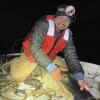

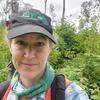





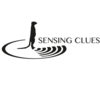











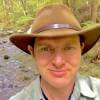
















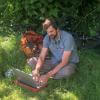


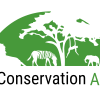


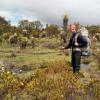

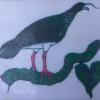
22 November 2022 2:46pm
Maybe she is not based in Asia, but you could check Lily Xu, who gave a presentation at the IUCN World Congress a year ago on using AI against poaching in Cambodia. The project is called Protection Assistant for Wildlife Security (PAWS).
For a summary of this project and another ( presented by a man ) see
Machine Learning against poaching and illegal logging – Rubber Boots Data
At the IUCN's World Conservation Congress I ran into two applications of machine learning (ML) to guard protected areas against direct detrimental human activity. Both stories are success stories but also both applications are in their early phases. In this post, I will compare the two and ask a couple of common sense questions that…